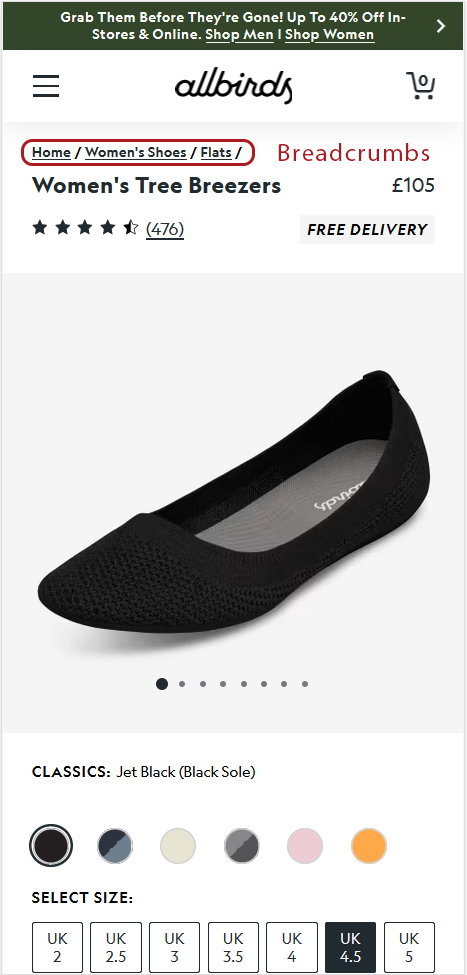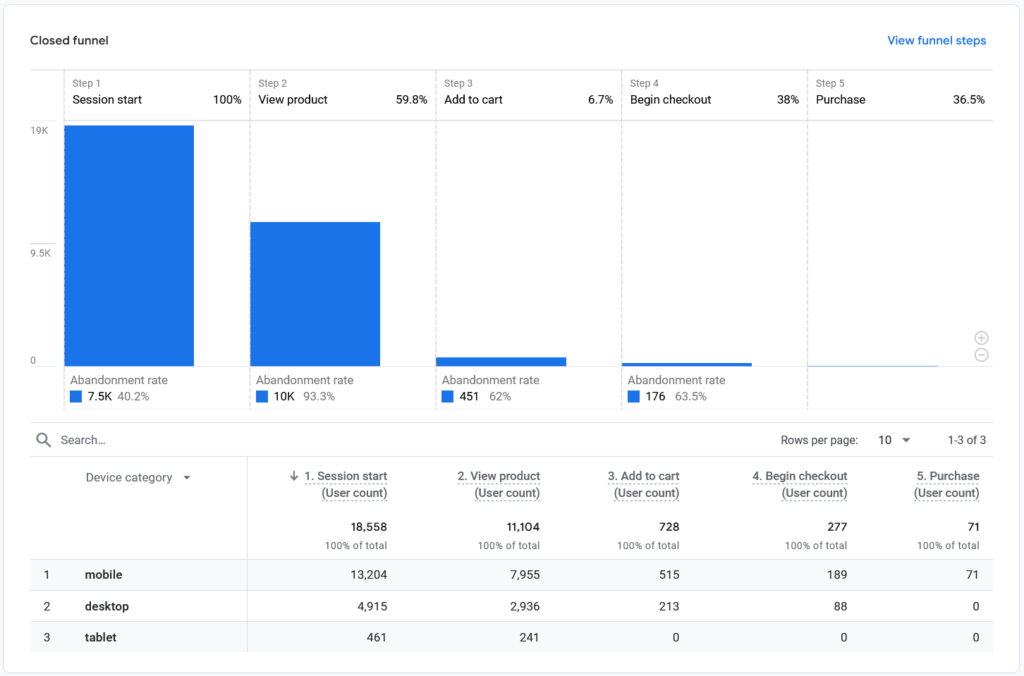Building a sleek and stunning Shopify store is no mean feat.
It’s the first step in forging an online presence, and it’s going to be pivotal in the success of your e-commerce business.
But how useful is a kick-ass website that nobody can find?
As my nan would say, about as useful as a chocolate teapot.
That’s where SEO comes in.
Here we delve into the depths of Shopify SEO so you can optimise your store to get more traction on search engines.
1. Structure Your Site
The structure of a shopify store, much like any eCommerce store, needs to be easy to navigate to make it user-friendly.
An intuitive structure is also easier for search engines to crawl and index, so it’s a double win as a website owner. A pyramid-style structure works best for most eCommerce stores, For this, you have your homepage at the top of the pyramid, which leads to category pages. Each page leads to a subcategory, and each subcategory leads to products.

2. Conduct Keyword Research
Keyword research involves finding the most popular words or phrases that your target audience is likely to search to find products like yours. You can use Google Keyword Planner for help with this, or conduct your own keyword research by inputting search terms into Google and looking at ‘Related Searches’.
Once you’ve determined which keywords you want to focus on for each page you can ensure they’re included in product descriptions, title tags, and meta descriptions in a natural way. Avoid stuffing your content with keywords as search engines can recognise and penalise your site for this.
3. Avoid Product Variants
You’re likely going to list some products on your Shopify store that are the same item with slight variations. For example, you might be selling snakeskin boots in variations of black or tan. Shopify guides you to set this up as a single product with variants, but in doing this it will create a URL with ‘?variant=$id’ at the end. For example, the black snakeskin boots might have a URL like this:
exampleshop.com/products/snakeskin-boots?variant=6638600
And the tan snakeskin boots might have a URL like this:
exampleshop.com/products/snakeskin-boots?variant=8238641
This becomes an issue if a user is searching for a specific variant, and it could affect your ranking result for that product. Short, descriptive URLs containing relevant keywords are more likely to rank higher in search results. Because of this, it’s better to set up these variants are two entirely separate products. Then your URLs can look something like this, making them easier for both search engines and users to understand what they’re about:
exampleshop.com/products/black-snakeskin-boots
exampleshop.com/products/tan-snakeskin-boots
4. Set Title Tags and Meta Descriptions
Title tag and meta description optimisation can help with your search engine ranking, and also improve your click-through rate. You want to clearly and concisely explain what your webpage is about, incorporating keywords naturally and aiming to satisfy user intent. To optimize titles and descriptions on Shopify, select one of your products or category pages and scroll to the ‘Search engine listing preview,’. Now click ‘Edit website SEO,’ and boxes will appear where you can change the meta information. The title tag is what will be shown in blue in a Google search result, and the meta description is provided beneath this in a smaller, black or grey font.

Shopify allows up to 70 characters for the title tag, but you should stick to 60 characters or less to meet Google’s criteria. Similarly, Shopify allows up to 320 characters for the meta description, but you should aim for between 50 and 160 characters, otherwise Google is likely to create its own meta description on your behalf.
5. Create Compelling Product Descriptions
Product descriptions should inform customers while also including relevant keywords naturally. Unique and clear product descriptions work best for both user experience and SEO since they not only appeal to customers but also help search engines understand the context of your products.
6. Set Your Domain
Your Shopify store will be accessible via several different URLs. For example, users could reach your store using any of the following:
- exampleshop.com
- https://www.exampleshop.com
- https://exampleshop.com
- www.exampleshop.com
- exampleshop.myshopify.com
To avoid diluting link equity, which can affect SERP rankings, you should set your preferred domain. This is known as ‘domain canonicalisation’. You can do this by logging into your Shopify account and navigating to ‘Domain Settings’. From here, you can select your preferred domain by clicking ‘Set as primary’.
7. Optimise Images
Image optimisation is an important, and often forgotten, part of SEO.
To optimise your images for Shopify, be sure to use clear, appealing images that show your products in their best light. Images should be high resolution for improved user experience, but ideally, these should be compressed to help with page loading speed.
Remember to use alt text on all of your images, as this helps to put them in context for search engines, and can also be useful for users who cannot see the images.
8. Perform Data Markup
Structured data or Schema markups are beneficial to Shopify users because they give search engines a deeper understanding of your content, making it more likely to rank well in results.
It can also enable rich snippets in search results, which typically improves click-through rates, giving you more opportunity to convert visitors into paying customers, Most themes in Shopify already support Schema, so you just need to make sure you are thoroughly filling out all of your product information, such as price, inventory, etc.
The rich snippets can be seen in these search results beneath the meta description. Rich snippets can include such information as price, star rating, reviews, stock quantity, and delivery information.
9. Continually Monitor
A crucial part of Shopify SEO is continually monitoring the way users are responding to your site.

You can make use of SEO tools such as Google Analytics to track your website’s performance and make adjustments accordingly when needed.
Final Words
Setting up your Shopify platform and optimising it for search engines can be the difference between a failed attempt and an enviable success story. Use this guide to help you build the foundation blocks for your Shopify store, upon which you can continue to grow and expand.
Have any questions about Shopify SEO or need some support to get your Shopify store off the ground? Get in touch with us today.
- Canonicalization: The Dos and Don’ts of Canonical Tags - May 27, 2024
- On-Page SEO: The Ultimate Guide - May 25, 2024
- The Only WooCommerce SEO Tutorial You Need in 2024 - May 23, 2024
